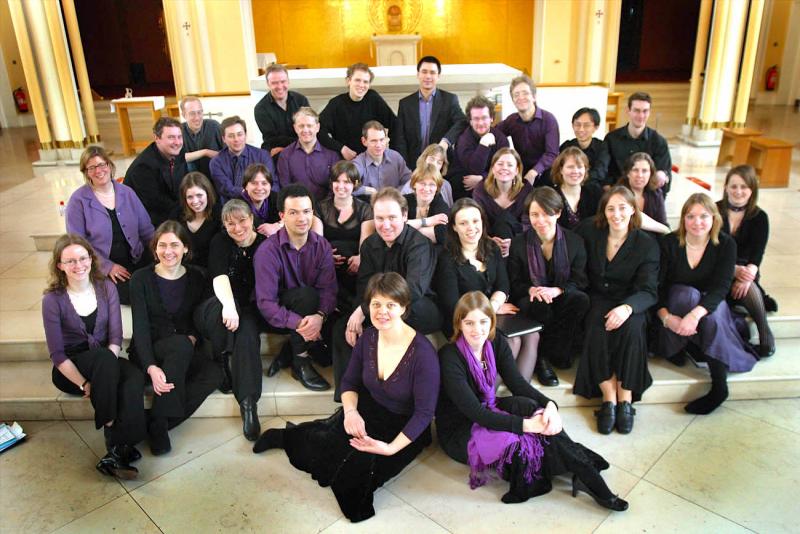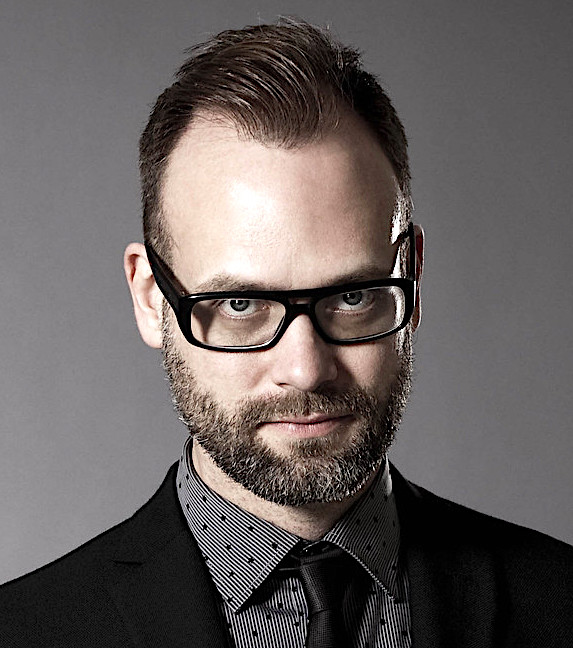Path of Miracles, Elysian Singers, St Pancras Church review – an ambitious musical pilgrimage | reviews, news & interviews
Path of Miracles, Elysian Singers, St Pancras Church review – an ambitious musical pilgrimage
Path of Miracles, Elysian Singers, St Pancras Church review – an ambitious musical pilgrimage
Medieval travellers provide an inspiring challenge to contemporary singers

Path of Miracles is a serious, hefty 65-minute choral work about the traditional Catholic pilgrimage to Santiago de Compostela by – and there is a slight cognitive dissonance here – Joby Talbot, the composer of, among other things, The Hitchhiker’s Guide to the Galaxy film.
Path of Miracles was commissioned in 2005 by the professional choir Tenebrae, who have recorded it twice, as have American choir Conspirare. I have long been a fan of the piece (and Talbot’s work in general) but had never previously heard it live. It is a real challenge for an amateur group, but the Elysian Singers, under Sam Laughton, are as intrepid in their musical exploration as the Santiago pilgrims themselves. I was delighted to see the choir emerging from the last two years, not by playing it safe with old favourites, but by pushing themselves into new territory.
 There are four movements, each of about 15 minutes, tracing the journey from Roncesvalles to its end at Finisterre. The music begins with the men processing onstage as they glissando from the subterranean depths, suddenly crowned with the upper voices from the back of the church singing “Herr Santiagu” on a stratospheric chord. This choreographic element is reversed at the end, as the choir processes off, singing the final phrase on a loop.
There are four movements, each of about 15 minutes, tracing the journey from Roncesvalles to its end at Finisterre. The music begins with the men processing onstage as they glissando from the subterranean depths, suddenly crowned with the upper voices from the back of the church singing “Herr Santiagu” on a stratospheric chord. This choreographic element is reversed at the end, as the choir processes off, singing the final phrase on a loop.
In between, the music conjures up influences of Renaissance church music, European folk music, “holy minimalism” and medieval chant. The text by Robert Dickinson is a masterful tapestry of quotation, allusion and original poetry, in as many as eight languages, and is a real gift to the composer. It offers a solid skeleton for the piece, a framework on which Talbot (pictured above) hangs his musical material. And it is the architecture of the work that is most impressive, sustaining its conceit through such a long span.
It is also the most impressive aspect of the performance: Laughton’s pacing was convincing, and the stamina of the choir through the music’s long paragraphs was remarkable. In the third movement the bright-toned sopranos danced around each other in minimalist loops, like the lights going on after the weary trudge of the second movement. There was a tightness in the insistent rhythmic passages that break up the hymn-like passages, as in the final moments, where the choir found a real warmth of sound. There were only a few moments of vocal uncertainty on some exposed entries but, for an amateur choir with presumably limited rehearsal time, the singing was admirable.
Path of Miracles has a granite certainty to it and was directed with authority by Sam Laughton, for whom this was clearly a personal mission. And the choir went with him. Fully committed to this difficult piece as they were, even if not every note was spot on, they produced an exhilarating evening of choral music that was rightly received very warmly.
rating
Explore topics
Share this article
The future of Arts Journalism
You can stop theartsdesk.com closing!
We urgently need financing to survive. Our fundraising drive has thus far raised £49,000 but we need to reach £100,000 or we will be forced to close. Please contribute here: https://gofund.me/c3f6033d
And if you can forward this information to anyone who might assist, we’d be grateful.

Subscribe to theartsdesk.com
Thank you for continuing to read our work on theartsdesk.com. For unlimited access to every article in its entirety, including our archive of more than 15,000 pieces, we're asking for £5 per month or £40 per year. We feel it's a very good deal, and hope you do too.
To take a subscription now simply click here.
And if you're looking for that extra gift for a friend or family member, why not treat them to a theartsdesk.com gift subscription?
more Classical music
 Appl, Levickis, Wigmore Hall review - fun to the fore in cabaret and show songs
A relaxed evening of light-hearted fare, with the accordion offering unusual colours
Appl, Levickis, Wigmore Hall review - fun to the fore in cabaret and show songs
A relaxed evening of light-hearted fare, with the accordion offering unusual colours
 Lammermuir Festival 2025, Part 2 review - from the soaringly sublime to the zoologically ridiculous
Bigger than ever, and the quality remains astonishingly high
Lammermuir Festival 2025, Part 2 review - from the soaringly sublime to the zoologically ridiculous
Bigger than ever, and the quality remains astonishingly high
 BBC Proms: Ehnes, Sinfonia of London, Wilson review - aspects of love
Sensuous Ravel, and bittersweet Bernstein, on an amorous evening
BBC Proms: Ehnes, Sinfonia of London, Wilson review - aspects of love
Sensuous Ravel, and bittersweet Bernstein, on an amorous evening
 Presteigne Festival 2025 review - new music is centre stage in the Welsh Marches
Music by 30 living composers, with Eleanor Alberga topping the bill
Presteigne Festival 2025 review - new music is centre stage in the Welsh Marches
Music by 30 living composers, with Eleanor Alberga topping the bill
 Lammermuir Festival 2025 review - music with soul from the heart of East Lothian
Baroque splendour, and chamber-ensemble drama, amid history-haunted lands
Lammermuir Festival 2025 review - music with soul from the heart of East Lothian
Baroque splendour, and chamber-ensemble drama, amid history-haunted lands
 BBC Proms: Steinbacher, RPO, Petrenko / Sternath, BBCSO, Oramo review - double-bill mixed bag
Young pianist shines in Grieg but Bliss’s portentous cantata disappoints
BBC Proms: Steinbacher, RPO, Petrenko / Sternath, BBCSO, Oramo review - double-bill mixed bag
Young pianist shines in Grieg but Bliss’s portentous cantata disappoints
 theartsdesk at the Lahti Sibelius Festival - early epics by the Finnish master in context
Finnish heroes meet their Austro-German counterparts in breathtaking interpretations
theartsdesk at the Lahti Sibelius Festival - early epics by the Finnish master in context
Finnish heroes meet their Austro-German counterparts in breathtaking interpretations
 Classical CDs: Sleigh rides, pancakes and cigars
Two big boxes, plus new music for brass and a pair of clarinet concertos
Classical CDs: Sleigh rides, pancakes and cigars
Two big boxes, plus new music for brass and a pair of clarinet concertos
 Waley-Cohen, Manchester Camerata, Pether, Whitworth Art Gallery, Manchester review - premiere of no ordinary violin concerto
Images of maternal care inspired by Hepworth and played in a gallery setting
Waley-Cohen, Manchester Camerata, Pether, Whitworth Art Gallery, Manchester review - premiere of no ordinary violin concerto
Images of maternal care inspired by Hepworth and played in a gallery setting
 BBC Proms: Barruk, Norwegian Chamber Orchestra, Kuusisto review - vague incantations, precise laments
First-half mix of Sámi songs and string things falters, but Shostakovich scours the soul
BBC Proms: Barruk, Norwegian Chamber Orchestra, Kuusisto review - vague incantations, precise laments
First-half mix of Sámi songs and string things falters, but Shostakovich scours the soul
 BBC Proms: Alexander’s Feast, Irish Baroque Orchestra, Whelan review - rapturous Handel fills the space
Pure joy, with a touch of introspection, from a great ensemble and three superb soloists
BBC Proms: Alexander’s Feast, Irish Baroque Orchestra, Whelan review - rapturous Handel fills the space
Pure joy, with a touch of introspection, from a great ensemble and three superb soloists
 BBC Proms: Moore, LSO, Bancroft review - the freshness of morning wind and brass
English concert band music...and an outlier
BBC Proms: Moore, LSO, Bancroft review - the freshness of morning wind and brass
English concert band music...and an outlier

Add comment